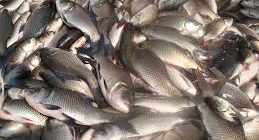The global seafood market is anticipated to reach USD 730 Billion by 2030, growing at a CAGR% of 8.9% from 2022-2030. The factors contributing towards the high growth are increased disposable income, awareness of fish being used as an ingredient in healthy food is growing. USA the government plans to sanction illegal fishing activities, actively promote fair trade, and promote strategies to promote the fishing industry through detailed strategies such as improving infrastructure and securing labor.
In terms of export import trade status, the country with the largest trade surplus in terms of import and export of the relevant product was China, recording a surplus of $312.88 million in 2022. The country with the largest surplus after China is the Philippines with a very high ratio of exports to imports, with 77.44 million in 2022.
This report focuses on identifying opportunities and strategies for investing in the global sea food market within the forecast period. It provides a complete analysis of the global market both quantitatively and qualitatively. The quantitative analysis includes market size and revenue data of the total demand, sub-markets, and regional/national levels throughout 2023-2033. Qualitative analysis depicts a full picture of market dynamics and trends including drivers, restraints and challenges, emerging products/market trends, and Porter’s Fiver Forces analysis.
Request for Sample & Brochure @ https://www.supplydemandmarketresearch.com/home/contact/249920?ref=Sample-and-Brochure&toccode=SDMRAG249920
The report is based on studies for 2021-2023 and provides a forecast from 2024 till 2033 with 2023 as the base year. Considering impact of COVID-19 and regional conflicts such as Russia-Ukraine war, the trend and outlook of global market is forecast in optimistic, balanced, and conservative scenarios. In the balanced view, the global respiratory drugs market is expected to reach $730 billion by 2030, growing by 8.9% annually over the coming years.
Highlighted with 90 tables and 104 figures, this 189-page report represents a 360-degree view on the global market with extensively detailed segmentations Type, Application, End-User, Export Import, Price, Distribution Channel, and Region/Country as shown below. Annual revenue 2023-2030 for each segment is included in the report.
By type, the sea food is sub divided into frozen, fresh and live. In 2021, frozen and refrigerated products account for over 70% of total seafood consumption, and consumption of frozen seafood products was around $7.0 billion, up about 41% from two years ago.
Global Sea Food Market By Type
Fish
Shrimp
Other Seafood
Global Sea Food Market By Form
Fresh / Chilled
Frozen / Canned
Processed
Live
By Distribution Channel
Off-Trade
Convenience Stores
Online Channel
Supermarkets and Hypermarkets
Other Distribution Channels
On-Trade
Some of the major players in the sea food market across the world are Austevoll Seafood ASA Trident Seafoods Corp., Amalgam Enterprises, Thai Union Group, Maruha Nichiro Corporation, Nippon Suisan Kaisha, Ltd., Dongwon Industries, Marine Harvest ASA, Clearwater Seafoods, High Liner Foods, AquaChile, Mowi ASA, Grupo Pescanova, Royal Greenland, PanaPesca Thai Union Canada, Cooke Aquaculture, Bakkafrost, Kverva AS, Leroy Seafood Group, Tassal Group Limited and others.
Request for Discount @ https://www.supplydemandmarketresearch.com/home/contact/249920?ref=Discount&toccode=SDMRAG249920
By Region
• North America (U.S., Canada, and Mexico)
• Europe (Germany, UK, France, Spain, Italy, Russia, Rest of Europe; Rest of Europe is further segmented into Netherlands, Switzerland, Poland, Sweden, Belgium, Austria, Ireland, Norway, Denmark, and Finland)
• APAC (Japan, China, South Korea, Australia, India, and Rest of APAC; Rest of APAC is further segmented into Malaysia, Singapore, Indonesia, Thailand, New Zealand, Vietnam, Taiwan, and Philippines)
• South America (Brazil, Chile, Argentina, Rest of South America)
• MEA (UAE, Saudi Arabia, South Africa, and Rest of MEA)
The breakdown of all regional markets by country and the breakdown of each national market by Type, Application, End-User, and Distribution Channel over the forecast years are also included.
Detailed Analysis of Export mandatory certification system and regulations-
• M.S.C.
• Vegan Action
• IFANCAHalal
• ISO 22000
• ASC
• HACCP
• Orthodox Union Kosher
• Others
The report includes Seafood Market Status, Economy, Global Trade, Local Trade, Local Seafood Distribution, Item import/export investigation, U.S. Flatfish Market, Consumption, Distribution, Distributors & Buyers, Export Entry Key Barriers, Tariffs and Customs Duty and Certifications and Regulations.
The report includes list of distributor’s, suppliers, buyers name, importers, exporters, contact details across the world.
Table of Contents
1. Introduction
1.1. Definition
1.2. Assumptions
1.3. Research Scope
1.4. Market Analysis by Regions
1.4.1. North America Market States and Outlook (2024-2030)
1.4.1.1. Global U.S. Flounder Market Size Analysis from (2024-2030)
1.4.1.2. Global U.S. Flounder Market Size Analysis from (2024-2030) by Consumption Volume
1.4.2. Global U.S. Flounder Market Size Analysis from (2024-2030) by Value
1.4.3. Global U.S. Flounder Price Trends Analysis from (2024-2030)
1.4.4. COVID-19 Outbreak: U.S. Flounder Industry Impact
2. Global U.S. Flounder Market by Types, Applications and Top Regions and Countries
2.1. Global U.S. Flounder (Volume and Value) by Type
2.2. Coated
2.2.1. Global U.S. Flounder Consumption and Market Share by Type (2024-2030)
2.2.2. Global U.S. Flounder Revenue and Market Share by Type (2024-2030)
2.3. Bleached
2.3.1. Global U.S. Flounder Consumption and Market Share by Type (2024-2030)
2.3.2. Global U.S. Flounder Revenue and Market Share by Type (2024-2030)
2.4. Global U.S. Flounder (Volume and Value) by Application
2.5. Food
2.5.1. Processed Food
2.5.2. Fresh Produce
2.5.3. Dairy Products
2.5.4. Food Grains
2.5.5. Confectionary & Bakery
2.5.6. Other Foods
2.5.7. Global U.S. Flounder Consumption and Market Share by Application (2024-2030)
2.5.8. Global U.S. Flounder Revenue and Market Share by Application (2024-2030)
2.6. Beverages
2.6.1. Alcoholic
2.6.2. Non-Alcoholic
2.6.3. Global U.S. Flounder Consumption and Market Share by Application (2024-2030)
2.6.4. Global U.S. Flounder Revenue and Market Share by Application (2024-2030)
3. Production Market Analysis
3.1. Global Production Market Analysis
3.1.1. Global Capacity, Production, Capacity Utilization Rate, Ex-Factory Price, Revenue, Cost, Gross and Gross Margin Analysis
3.1.2. Major Manufacturers Performance and Market Share
3.2. Regional Production Market Analysis
3.2.1. Regional Market Performance and Market Share
3.2.2. North America
4. Global U.S. Flounder Sales, Consumption, Export, Import by Regions (2024-2030)
4.1. U.S. Flounder Consumption by Regions (2024-2030)
4.1.1. North America U.S. Flounder Sales, Consumption, Export, Import (2024-2030)
5. North America U.S. Flounder Market Analysis
5.1. North America U.S. Flounder Consumption and Value Analysis
5.1.1. North America U.S. Flounder Market Under COVID-19
5.2. North America U.S. Flounder Consumption Volume by Types
5.3. North America U.S. Flounder Consumption Structure by Application
5.4. North America U.S. Flounder Consumption by Top Countries
5.4.1. United States U.S. Flounder Consumption Volume from 2024-2030
5.4.2. Canada U.S. Flounder Consumption Volume from 2024-2030
5.4.3. Mexico U.S. Flounder Consumption Volume from 2024-2030
6. Company Profiles and Key Figures in U.S. Flounder Business
6.1. XYZ Group
6.1.1. XYZ Company Profile
6.1.2. XYZ U.S. Flounder Product Specification
6.1.3. XYZ U.S. Flounder Production Capacity, Revenue, Price and Gross Margin (2024-2030)
7. Global U.S. Flounder Market Forecast (2024-2030)
7.1. Global U.S. Flounder Consumption Volume, Revenue and Price Forecast (2024-2030)
7.1.1. Global U.S. Flounder Consumption Volume and Growth Rate Forecast (2024-2030)
7.1.2. Global U.S. Flounder Value and Growth Rate Forecast (2024-2030)
7.2. Global U.S. Flounder Consumption Volume, Value and Growth Rate Forecast by Regions (2024-2030)
7.2.1. Global U.S. Flounder Consumption Volume and Growth Rate Forecast by Regions (2024-2030)
7.2.2. Global U.S. Flounder Value and Growth Rate Forecast by Regions (2024-2030)
7.2.3. North America U.S. Flounder Consumption Volume, Revenue and Growth Rate Forecast (2024-2030)
7.3. Global U.S. Flounder Consumption Volume, Revenue and Price Forecast by Type (2024-2030)
7.3.1. Global U.S. Flounder Consumption Forecast by Type (2024-2030)
7.3.2. Global U.S. Flounder Revenue Forecast by Type (2024-2030)
7.3.3. Global U.S. Flounder Price Forecast by Type (2024-2030)
7.4. Global U.S. Flounder Consumption Volume Forecast by Application (2024-2030)
7.5. U.S. Flounder Market Forecast Under COVID-19
8. Survey Overview
8.1. Background
8.2. Others
9. US Seafood Market Status
9.1. Overview
9.2. Economy
9.3. Global Trade
9.4. Local Trade
9.5. Local Seafood Distribution
10. Item import/export investigation
10.1. Global Trends
10.2. Export/Import
11. U.S. Flatfish Market
11.1. Overview
11.2. Flounder Consumption
11.3. Local Flounder Distribution
11.4. Outlook
12. Overview of U.S. Flounder Distributors & Buyers
12.1. Leading buyers for American Hypermarkets
12.2. Leading buyers for US Importers
12.3. Prospective buyers for large U.S. Raw Fish Restaurants
13. US Export Entry Key Barriers
13.1. Tariffs and Customs Duty
13.2. Certifications and Regulations
13.3. Others
14. Conclusions
15. Research Methodology
Buy Now the report @ https://www.supplydemandmarketresearch.com/home/purchase?code=SDMRAG249920
SUPPLY DEMAND MARKET RESEARCH
Mr. Charles Lee
302-20 Mississauga Valley Blvd, Mississauga ,
L5A 3S1, Toronto, Canada
Phone Number: +1-276-477-5910
Email- info@supplydemandmarketresearch.com






Leave a reply